#castles of the british isles
Text
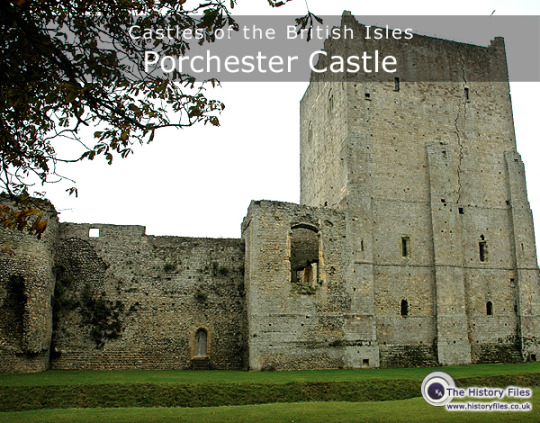
Portchester Castle : this castle Hampshire on England's south coast began life as a Roman coastal fort, one of their Saxon Shore forts, but it also contains medieval additions which extended its working life across a millennium.
#history#historyfiles#castles of the british isles#castles of britain#british castles#castle#castles#portchester castle#hampshire#england#saxon shore#portus adurni
4 notes
·
View notes
Photo

Castles of the British Isles https://vividmaps.com/castles-of-the-british-isles/
3 notes
·
View notes
Photo

Castles of the British and Irish Isles
by u/NeilParkinsonMakes
442 notes
·
View notes
Text

Happy First Day of Spring!
Photo: Edinburgh, Scotland
#scotland#uk#united kingdom#edinburgh#dunedin#auld reekie#edinburgh castle#castle#british castles#spring#flowering trees#great britain#british isles#travel#tourism#adventure#explore#flowers#trees#european travel#europe#see the world#international travel#european vacation#nature#history
50 notes
·
View notes
Text
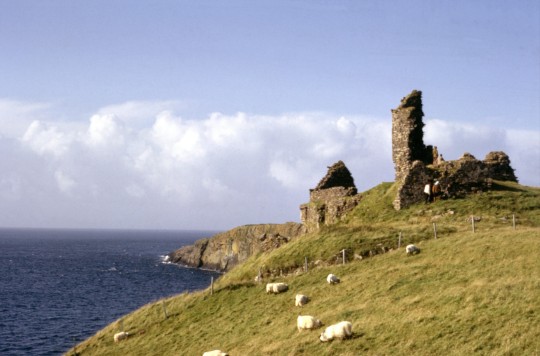
Duntulm Castle on Skye
#duntulm castle#united kingdom#united#kingdom#uk#Scotland#Skye#isle of skye#great britain#british islands#scottish#british nature#mother nature#nature#landscape#castle#ancient ruins
141 notes
·
View notes
Text

Dunvegan Castle, Isle of Skye
#nature#landscape#castle#buildings#scotland#isle of skye#travel#fairycore#royalcore#trees#castle garden#writing inspiration#writing inspo#dunvegan#scottish castle#british castles#wip: witch of the wild
5 notes
·
View notes
Text
The Mysterious Fairy Flag of Clan MacLeod and its Legendary Protective Powers | Ancient Origins
https://www.ancient-origins.net/artifacts-other-artifacts/mysterious-fairy-flag-clan-macleod-and-its-legendary-protective-powers-020884

View On WordPress
#1079#4th century AD#British Isles#Byzantine#Clan MacLeod#Cliffs of Dover#Constantinople#Crusades#Dame Flora MacLeod#Dunvegan Castle#England#Fairy Flag#First Crusade#Germans#Godred Crovan#Great Britain#Harald Hardrada#Harald Sigurdsson#Iain Ciar#Isle of Skye#King Godred Sigtryggsson#Kingdom of Mann#Landoda#MacDonalds#MacLeod Clan#Middle East#Norse#Norway#Rhodes#Syria
1 note
·
View note
Note
Hey bestie whats a narrow boat? I saw you tag that on something you reblogged and I'm pretty curious now!



- Terry Darlington, Narrow Dog to Carcassone
A narrowboat (all one word) is a craft restricted to the British Isles, which are connected all over by a nerve-map of human-made canals. To go up and down hills, the canals are spangled with locks (chambers in which boats can be raised or lowered by filling or emptying them with water.) As Terry says above, the width of the locks was somewhat randomly determined, and as a result, the British Isles have a narrow design of lock - and a narrowboat to fit through them. A classic design was seventy feet long and six feet wide. Starting in the 18th century, and competing directly with trains, canal “barges” were an active means of transport and shipping. They were initially pulled along the towpaths by horses, and you can still see some today!
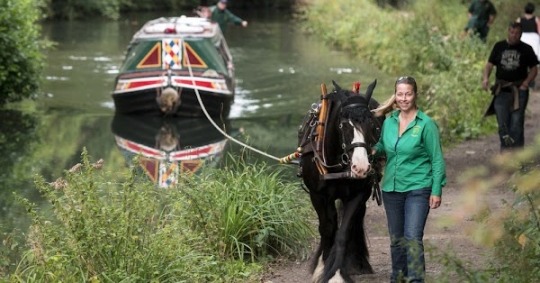
Later, engines were developed.
Even after the trains won the arms race, it was a fairly viable freight service right up until WW2. It’s slow travel, but uses few resources and requires little human power, with a fairly small crew (of women, in WW2) being capable of shifting two fully laden boats without consuming much fossil fuel.
In those times the barges were designed with small, cramped cabins in which the boaters and their families could live.
During its heyday the narrowboat community developed a style of folk art called “roses and castles” with clear links to fairground art as well as Romani caravan decor. They are historically decorated with different kinds of brass ornaments, and inside the cabins could also be distinctively painted and decorated.
Today, many narrowboats are distinctively decorated and colorful - even if not directly traditional with “roses and castles” they’ll still be bright and offbeat. A quirky name is necessary. All narrowboats, being boats, are female.
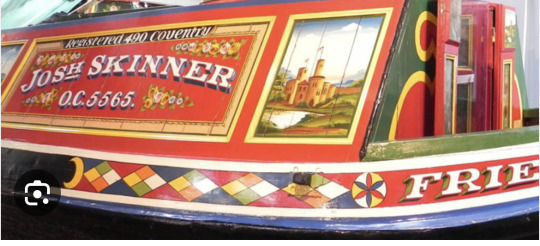

After a postwar decline, interest in the waterways was sparked by a leisure movement and collapsing canals were repaired. Today, the towpaths are a convenient walking/biking trail for people, as they connect up a lot of the mainland of the UK, hitting towns and cities. Although the restored canals are concrete-bottomed, they’re attractive to wildlife. Narrowboats from the 1970s onward started being designed for pleasure and long-term living. People enjoy vacationing by hiring a boat and visiting towns for a cuter, comfier, slower version of a campervan life. And a liveaboard community sprang up - people who live full-time on boats. Up until the very restrictive and nasty laws recently passed in the UK to make it harder for travelling peoples (these were aimed nastily at vanlivers and the Romani, and successfully hit everyone) this was one of the few legal ways remaining to be a total nomad in the UK.
Liveaboards can moor up anywhere along the canal for 28 days, but have to keep moving every 28 days. (Although sorting out the toilet and loading up with fresh water means that a lot of people move more frequently than that.) you can also live full-time in a marina if they allow it, or purchase your own mooring. In London, where canal boats are one of the few remaining cheapish ways to live, boats with moorings fetch the same prices as houses. It can be very very hard for families to balance school, parking, work, and all the difficulties of living off-grid- but many make it work. It remains a diverse community and is even growing, due to housing pressures in the UK. Boats can be very comfortable, even when only six feet wide. When faced with spending thousands of pounds on rent OR mooring up on a nice canal, you can see why it seems a romantic proposition for young people, and UK television channels always have slice-of-life documentaries about young folks fixing up their very own quirky solar-powered narrowboat. I don’t hate; I did it myself.
If you’re lucky, you might even meet some of the cool folks who run businesses from their narrowboats: canal-side walkers enjoy bookshops, vegan bakeries, ice-cream boats, restaurants, artists and crafters. There are Floating Markets and narrowboat festivals. It’s generally recognised that boaters contribute quite a lot to the canal - yet there are many tensions between different kinds of boaters (liveaboards vs leisure boaters vs tourists) as well as tensions with local settled people, towpath users like cyclists, and fishermen. I could go on and on explaining this rich culture and dramas, but I won’t.
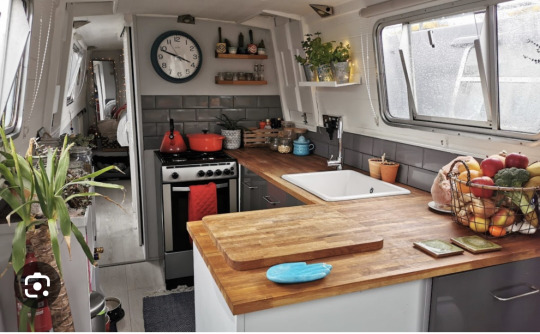

Phillip Pullman’s Gyptians are a commonly cited example of liveaboards - although they were based on the narrowboat liveaboards that Pullman knew in Oxford, their boats are actually Dutch barges. Dutch barges make good homes but are too wide to access most of the midlands and northern canals, and are usually restricted to the south of the UK. So they’re accurate for Bristol/London/Oxford, and barges are definitely comfier to film on. (Being six feet wide is definitely super awkward for a boat.) but in general Dutch barges are less common, more expensive and can’t navigate the whole system.

However, apart from them, there are few examples of narrowboat depictions that escaped containment. So it’s quite interesting that there is an entire indigenous special class of boat, distinctive and highly specialised and very cute, with an associated culture and heritage and folk art type, known to all and widely celebrated, and ABSOLUTELY UNKNOWN outside of the UK - a nation largely known around the world for inflicting its culture on others. They’re a strange, sweet little secret - and nobody who has ever loved one can resist pointing them out for the rest of their lives, or talking about them when asked to. Thank you for asking me to.
6K notes
·
View notes
Text
Design of Midhope Distillery
The parts of document I'm showing in this post was presented and designed on June 26, 2020

EXECUTIVE SUMMARY
This Design and Access Statement accompanies a Planning Applica- tion for a new Single Malt Scotch Whisky Distillery at Midhope Castle which lies within the Hopetoun Estate on the outskirts of Edinburgh. It is intended this is the first of a series of applications containing proposals to regenerate the Castle, the surrounding listed buildings and landscape setting.
The overall project aims to create an environment to produce, share and market an exceptional whisky. Its success depends not just on the production of whisky but on the ability to invite guests to see the creative process, appreciate its origins and have the time to experi- ence the whisky and the environment. It is intended in the future that the castle will be the venue for a significant part of these activities.
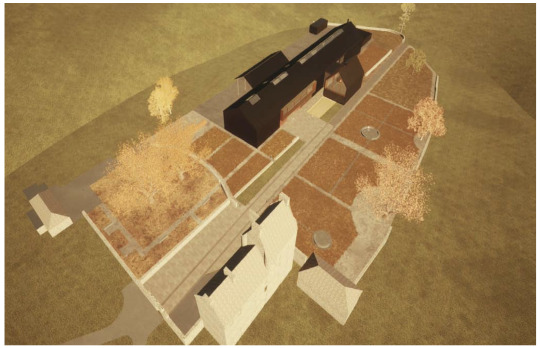

Note, the clients Golden Decanters and Hopetoun estate are the original applicants. Golden Decanters changed their company name since April 2022
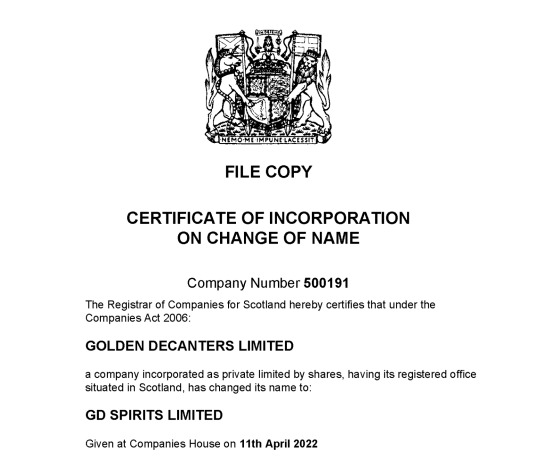
Design Team
Project Manager - Curries & Brown
Currie & Brown works across the public and private sectors, including commercial property, consumer goods, defence, education, funding institutions, government, healthcare, high-tech, hospitality and leisure, industrial, mixed-use developments, nuclear, pharmaceuticals and life sciences, PPP/P3, residential property, retail, trans- portation and logistics and utilities and renewables. wWith our global reach, Currie & Brown brings together a large group of talented professionals to offer our clients a comprehensive range of the services, experience and expertise, together with a significant value added offering.
Planning Consultant - Scott Hobbs Planning
Scott Hobbs Planning (SHP) is an established planning and development consul- tancy founded in 2004, servicing clients throughout the British Isles, for major mixed use, commercial, retail and residential development. The practice has wide ranging and detailed experience in all aspects of planning-related work including national policy shaping, development planning and development management; development framework and master-planning; and consultation processes.
Architect - 56three Architects
56three is a design based Practice with projects covering new build, conservation and refurbishment works throughout the UK.
We have an award winning team of architects, technicians and interior design- ers who are able to provide the full range of architectural services from feasibility through to construction.
Landscape Architect - rankin fraser landscape architects
rankinfraser landscape architecture llp was formed in January 2008. Based in Edin- burgh, Scotland the practice brings together Chris Rankin and Kenny Fraser – two Landscape Architects with over 30 years combined experience of delivering award winning projects from conception through to completion
We combine practice with research and teaching to provide our clients with a thoughtful, creative and professional approach to landscape design and place mak- ing covering public realm, landscape urbanism, housing landscapes, education and health projects in urban and rural situations.
LOCATION
The site is approximately 11.5 miles West of the City of Edinburgh, 5 miles to the North West of Edinburgh airport, 3.5 miles to the West of the South Queensferry, and a little under half a mile South of the Firth of Forth. It has an overall area of 6.9 hectares within the beautifully managed Hopetoun Estate. Hopetoun House is approximately 1 mile East of the site.

SITE
The site is located within Hopetoun Estate but outside the area of the Designated Designed Landscape that surrounds Hopetoun House and Abercorn to the east. The site for the new distillery is located to the immediate west of Midhope Castle.
The Castle is reached via an access road runs for approximately a quarter of a mile, west from the road link between the hamlet of Ab- ercorn and the A904.
The site to the east of the Midhope Burn is largely dense woodland. A Fireworks manufacturing business is currently located in a large clearing near the entrance to the site. This clearing was formerly the location of a Saw Mill.
The access road arrives at a small car park. There is a path that leads to the outer wall of the Castle courtyard.

Midhope Castle is to the north-east of the site with a courtyard and a modest walled garden to the immediate South. Behind the castle, just to the north, is a small derelict Victorian, ancillary building.
In the space to the east of the castle toward the approach road there are two Victorian cottages and a doocot.
The site for the distillery building is to the south-west of the cas-
tle and in an area that is currently occupied by a number of modern agricultural sheds and some hard-standing left from recent utilitarian ancillary structures. The area is functional and has no obvious sig- nificant historic structures. It currently houses the grounds for a tree climbing and chainsaw training company which is in the process of relocating.
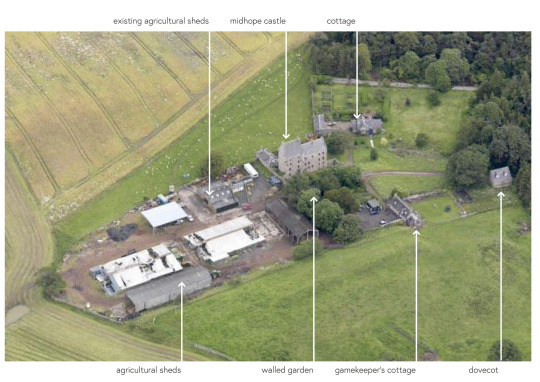






HERITAGE CONTEXT
The original Midhope Castle (recorded as “Medhope Castle”) was built in the late 15th century. In 1587 this castle was partially rebuilt.
The castle was extended in 1664 and reached the general arrange- ment and form that can be seen today. Further extensions and altera- tions took place in 1678.
By the early 20th century the castle was in a state of disrepair and the interior timber staircase recorded as being in poor condition.
In 1988 a programme of consolidation and partial restoration was undertaken. A new roof was formed on the West Tower and steelwork was inserted within the shell of the castle to stabilse the structure. New window frames were inserted into the existing openings. This work seems to have arrested any further significant deterioration.
Today the building is in a ruinous state internally, and most of the in- ternal features have been lost, but is generally wind and water tight.
Midhope Castle was designated as a Scheduled Monument in 1950 and was given a Category A listing in 1971 . In 2018 the Scheduled Monument status was removed and the designation was simplified to the current Category A listing.


The Roy Lowlands map of 1754 shows the castle within the wider context of the Hopetoun House Estate. To the north of the castle are a series of geometrically arranged copses either side of an axis that relates to Hopetoun House to the west. Today some of these trees are still visible.
The landscape around Midhope Castle is also visible on this plan - the series of walls that form the courtyard at the castle, and the larger open area to the west.

The 6 inch map of 1854 more shows Midhope Castle in the form that it can be seen today. The approach path from the east, the Doocot, the gamekeeper’s cottage and the walled garden to the south of the castle are visible.
This plan also shows the state of the landscape to the west of the castle. A path or track extended out from the courtyard into the land- scape and a series of gardens were enclosed to the north.
The south edge of the site was defined by a row of trees that aligned with the walled garden.
The remaining traces of these landscape structures have informed the location of the new distillery building and the landscape strategy.
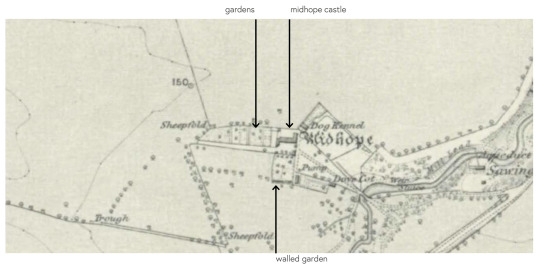
MASTERPLAN APPROACH
The current application is the first in a series of planned phased pro- posals for the site that will initially improve the setting, and stabilise the fabric, of the castle, and later seek to reuse and regenerate the castle.
The construction of the distillery and the production of the whisky need to be the first steps in order to establish the business and generate income in order to progress to the next phases of the wider project.
In the medium term there are also plans to open parts of the castle to facilitate some of visitors who currently visit the site due to the castle’s association with the “Outlander” television series.
There is the ultimate aim to use the castle for visitor functions that are complimentary to the new distillery – tasting spaces, dining, and potentially overnight accommodation.
All of these future works will carefully balance the repair and refur- bishment of the existing historical fabric of the castle and surround- ing landscape features. Further refinement of the timing and content of these next phases will reviewed as the project develops.

VISION
Initial works
The current Planning Application is for the new distillery building together with the immediate landscaping, a new access road and the change of use of Midhope Castle to visitor accommodation.
An application for Listed Building Consent will follow. This will include the repair and refurbishment works to the landscape features around the castle- the reinstatement of the damaged stone piers, the re- gaining of the walled garden and cobbled castle forecourt and the potential removal of derelict outbuildings. It has not been possible to gain access to the site to carry out these surveys due to restrictions imposed by the Covid 19 crisis.
Next steps
Future Planning Applications and Listed Building Applications are planned as the business becomes established. These include plans for a Maltings Building at the former Sawmill site, work to the castle and extensions as appropriate, repurposing of the Dovecot, and other facilities in the grounds of the castle and distillery.
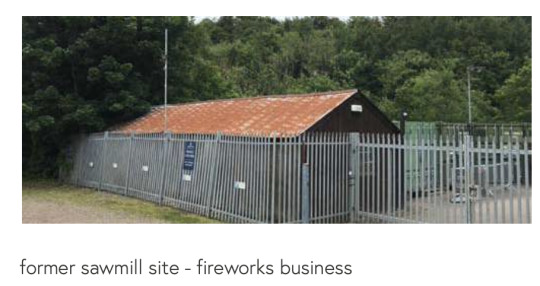

SCOPE OF INITIAL PHASE
It is possible to conceptually divide the site into two areas, they can broadly be described as modern farm building land and the castle grounds. It is not intended that the physical distinction between the areas be over emphasised in the finished design but it is a useful tool in describing the approaches to the specific areas. The distillery is proposed to be on the farm building land, with the main road and the access road coming across the castle grounds.
The farm building land does not have any obvious structures of histor- ic significance, whilst the castle grounds are rich with elements that are historically significant and referred to in the category A listing of the castle and the Category B listing of the Doocot.
The historic influence on the farm building land is most strongly ap- parent in its relationship to the castle grounds. The land spreads in
a relatively level expanse from the castle and forms the base of an approximate bowl. This reinforces the sense that the area that will house the distillery, despite being the larger area, is attendant on the castle as the most substantial historic structure on the site.
Very little work is proposed to the immediate castle grounds in this application. The client wishes to take the time to carefully consider the appropriate design and relationship with the existing buildings. The intention is to intervene in this area as little as possible at this point and only to the extent that is required to access the distillery site without negatively affecting the significant historic fabric.
The castle grounds are subject to ongoing analysis and will be the focus of future applications in subsequent phases.
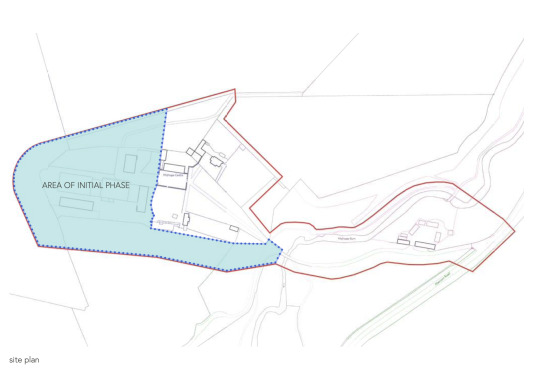
DESIGN PROPOSALS
The distillery is seens as the first phase of a sequence of develop- ments on the wider site aimed at enriching the landscape and improv- ing the setting and fabric of Midhope Castle.
The aspiration is to create a unique place where the production of Whisky, the landscape it draws from and the heritage of the site can be enjoyed. The setting and location is key to the proposal.
The new distillery building will have two main functions. It will pro- duce over 500,000 litres of whisky a year from Barley grown on the Estate. It will also offer visitors the opportunity to see all aspects of the Whisky production process and to enjoy the unique historical set- ting and landscape.
The setting of the distillery is one that has many layers of history. It will be close to Midhope Castle, which is known to date from the fif- teenth century and along with the land around has been altered many times over the subsequent years. The castle was occupied until the 1920s and each periodw has resulted in change. The additions to the castle are clear to see, and there are buildings around the castle that date from the 1800s. The setting shows a timeline of agricultural use and castle shows evidence of the varied occupation that ranges from aristocracy to the workers on the land.
The castle is the embodiment of the historic significance of the site, and this position is to be carefully maintained. The orientation of the new design is lead by the influence of the existing fabric. It’s form will have a larger footprint but a lower height, it will not compete with the castle but rather work alongside it, and by looking toward the castle’s raised entrance create an exciting new dynamic.

SETTING & ACCESS
The approach to the site will be along the existing track which winds through dense woodland to a clearing that is currently used as a car park for visitors to the castle.
From here a new access route is proposed to take service traffic for the distillery to the south, away from the castle and existing cottages.
The existing footpath leads up to the castle courtyard past the listed dovecot building and existing Victorian cottage and outbuildings to the north.
The courtyard sits between the castle and the overgrown walled gar- den to the south. To the west of this enclosed outdoor space is the open area currently given over to light industrial and agricultural use. This largely flat area of land sits within a shallow depression relative to the surrounding wider agricultural landscape. This will be the site of the new distillery.
The distillery begins to be visible on moving through the courtyard. The new building will align with the traces of an route that once ran through this area out to the west.

SETTING & RESPONSE
The new building consists of three, simple shed-like forms.
The largest is a long, pitched roof building that edges the south of the site. This building will contain most of the distillery production areas and spaces for visitors – a display area containing whisky ma- turing in barrels, tasting spaces, and multi-purpose areas that can be used for exhibitions and functions.
To the north is a second smaller pitched roof form that contains the stills and shelters the worm tubs.
To the south a third pitched roof form encloses external tanks and barrel storage.
A service yard is located to the south of the distillery and sits be- tween the new building and the existing embankment. The service yard and the more industrial activity is hidden from view from the surrounding landscape and most importantly is invisible from the ap- proach road and castle. Access to the service yard will be provided by a new road formed to the south of the main site.
The public areas of the distillery will offer views back to the castle and the landscape to the north. The landscape around the distillery will reinstate paths and routes that we once on the site.

DESIGN DEVELOPMENT
The basic form of the new building has been influenced by common simple, robust utilitarian agricultural buildings. From a distance the distillery will appear as a grouping of simple, quiet forms in the land- scape.
The still house will be wrapped in timber giving it an abstract quality. This building will contain the stills and their copper forms will be vis- ible through the glazed gable facing the castle courtyard.
The still house sits in a cooling pond and forms a gathering place at the visitor entrance to the distillery. This entrance aligns with both the reinstated road and wall running east to west but also with the existing track that leaves the site to the north.
A large framed window on the first floor of the distillery offers pano- ramic views back to the castle, across the structured landscape close to the distillery and further to the agriculutral fields of the estate beyond. These large windows will be edged in bronze metal cladding,
The maturation display area at the east end of the building will be clad in stained or charred slatted timber that will allow in direct light into the space. On dark evenings this end of the building will glow and act as a lantern drawing visitors across the landscape from the castle.
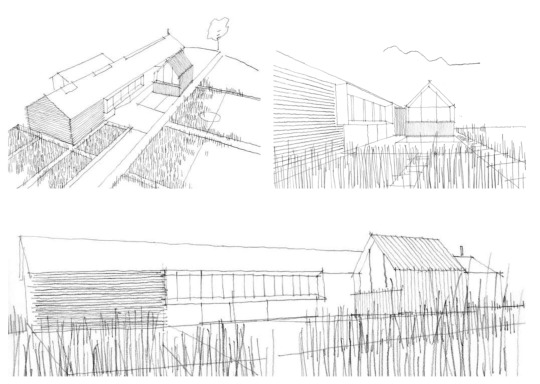




As I showed in my previous post, these plans are now revised and filed again on 8 February 2024, awaiting a decision. This document was filed on 21 March 2024. There are some minor changes to the original plans which were already approved in 2021

52 notes
·
View notes
Video
Skye on Fyre by Barry Crosthwaite
Via Flickr:
Sun setting over the Isle of Skye and Eilean Donan Castle. Built in the 13th century, and destroyed in 1719 by the British, Eilean Donan castle is one of the most photographed and filmed castles in the world.
61 notes
·
View notes
Note
Sorry, but as a non Canadian whose from the Pacific Northwest and thus has only interacted with Vancouverites, what the fuck is a Toronto accent and what’s the difference between it and a Newmarket one?
Okay answer as serious as I can make it sound: BC/Vancouver English is genuinely phonetically different from Ontario/Toronto English in a few ways -- Ontario across the board has stronger effect of more "stereotypical" Canadian accent features such as:
Canadian raising (before unvoiced consonants, au- and ai- diphthongs (think "house" or "writer") are a "higher" vowel than before voiced ones (ex. "writer" and "rider" have two different vowels to me))*
Oo- fronting (pushing "forward" of the vowel)
/ae/ raising (making "bag" closer to rhyming with "maid") before g (think saying baygel?)
There's a few other ones but I'm on mobile and it's 1am and they're a lot more like... linguistic jargony... if you are interested pls review the "Canadian Shift" on your own time i barely understand it myself 😭😭😭
*Other Non-Canadian regions in the area (American Great Lakes) or ancestral regions (parts of the British Isles) will sometimes do one of these shifts (either ai- or au-) but only Canada does both
Functionally Newmarket and Toronto probably have similar enough accents that they're indistinguishable unless you are going IN with the audio software but I am a Vibes Man and to me they're different. I can't explain it but they are. I can tell when someone has gone between Bloor and Castle Frank on the subway organically or not it's the vibe
#asks#also watching hockey is a PRIME place to observe Canadian accents in the wild bc some of them have really strong ones#sidney.
23 notes
·
View notes
Text
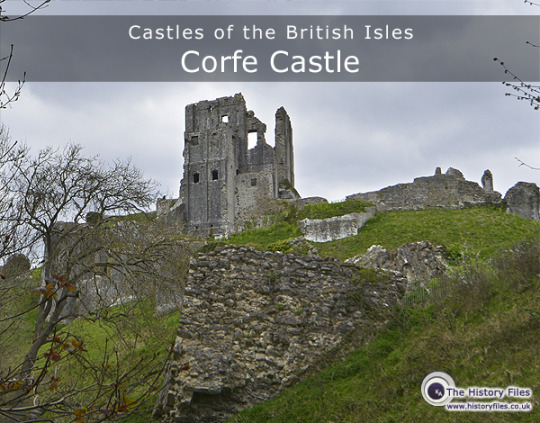
Corfe Castle: the castle's position allows it to dominate a gap in the Purbeck Hills, with the location probably meaning that a fortified site had been established here long before the Norman conquest.
#history#historyfiles#corfe castle#castles#castles of britain#british isles#castles of the world#purbeck hills#normans#norman kings#norman conquest#photos#architectural photography
2 notes
·
View notes
Text
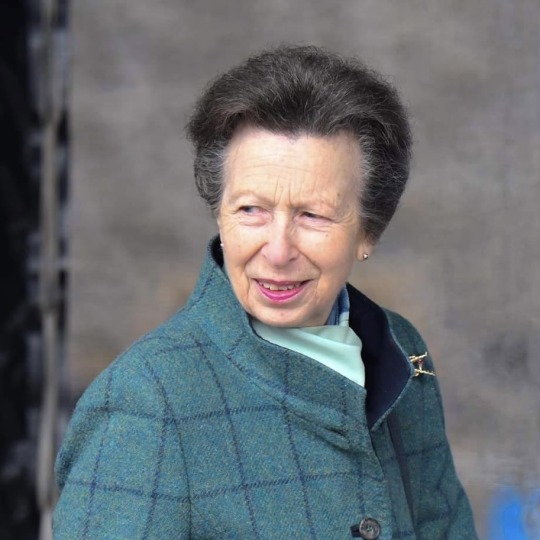


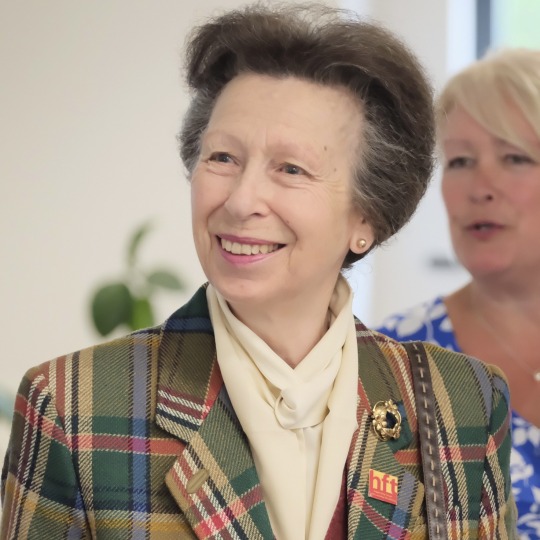
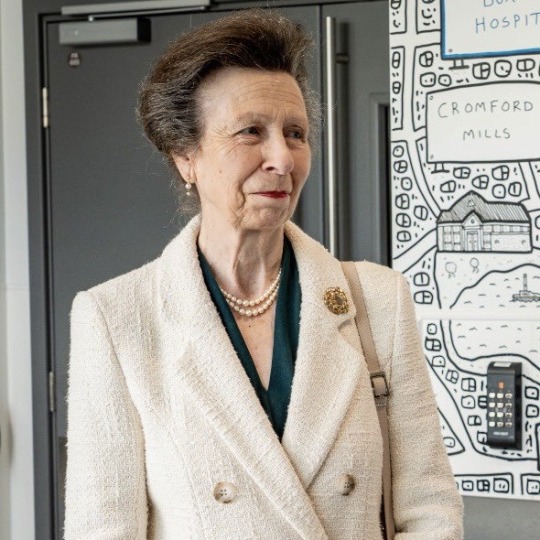
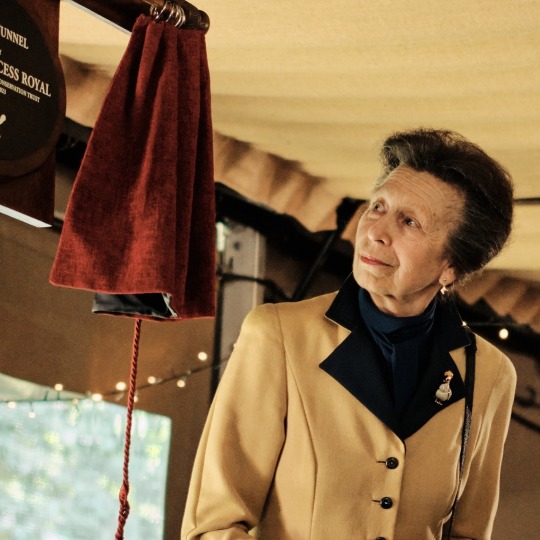


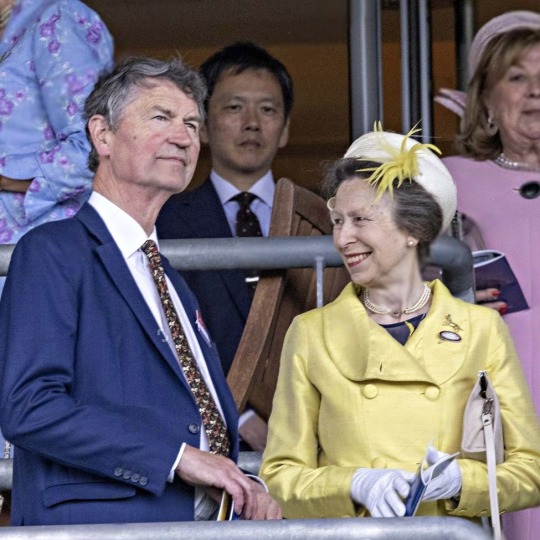
The Princess Royal’s Official Engagements in July 2023
01/07 Princess Anne accompanied by Sir Tim, opened the 30th Scottish Traditional Boat Festival at Portsoy Harbour. ⛴️
03/07 As Chancellor of Harper Adams University, visited the University’s Future Farm, Edgmond and met the 2023 Marshal Papworth Foundation Scholars. 👩🎓
As Patron, Scottish Fisheries Museum’s Reaper Appeal visited the Scottish Fisheries Museum in St. Ayles, Anstruther. 🎣
04/07 Visited Strathcarron Hospice, Denny. 👩⚕️
As Colonel-in-Chief of the Intelligence Corps, attended a 5 Military Intelligence Battalion Training Night at the Army Reserve Centre, Edinburgh. 💂
05/07 As part of Holyrood week in Edinburgh, Princess Anne carried out the following engagements;
Opened the Royal Hospital for Children and Young People and the Department of Clinical Neurosciences, at NHS Lothian as part of #NHS75 celebrations. 🧸
Opened King’s Buildings Nucleus Building at the University of Edinburgh. 👩🎓
Launched WETWHEELS EDINBURGH Accessible Boat at Port Edgar Marina. 🦽🛥️
Attended a Dinner at the Waldorf Astoria for Eric Liddell 100 programme. 🍽️
06/07 As President of the UK Fashion and Textile Association, attended the Textile Institute World Conference at the University of Huddersfield. 🪡
Opened Bradford Teaching Hospitals NHS Foundation Trust’s Maternity Theatre at Bradford Royal Infirmary.🤰
As Colonel of The Blues and Royals, with Sir Tim, took the salute at the Household Division Beating Retreat on Horse Guards Parade. 🫡
07/07 Attended a Charity Polo Day at Cirencester Park Polo Club for the Spinal Injuries Association 🐎
11/07 Visited Flintshire Adult Day Care Centre, Hwb Cyfle in Queensferry, Wales. 🏴
HRH, as the new Patron of BASC (British Association for Shooting and Conservation) visited their Headquarters at Marford Mill, Wrexham, Wales. 🦡
12/07 Visited St Helena’s Nursing Campus at the University of Derby in Chesterfield. 👩⚕️
Opened Chesterfield Royal Hospital NHS Foundation Trust’s new Urgent and Emergency Care Department. 🏥
Attended a Reception at Rolls-Royce Learning and Development Centre for the Motor Neurone Association. 🚘
13/07 Sir Tim represented the Princess Royal at a service of thanksgiving for the life of Admiral of the Fleet Lord Boyce at Westminster Abbey. ⚓️
Princess Anne opened the King’s Arch at Government House, visited the Tortoise Takeover Trail at Gorey Castle and subsequently opened the Tortoise Tunnel at Jersey Zoo. 🇯🇪🐢
Princess Anne with Sir Tim, later attended the Royal Academy of Engineering Annual Awards Dinner at the Londoner Hotel in Leicester Square, London. 🏆
14/07 Opened the new Southampton Citizens Advice Bureau and visited DP World Shipping Container Terminal. ⛴️
15/07 As Colonel-in-Chief of the Intelligence Corps, attended their Annual Corps Day at Chicksands. 🪖
18/07 Princess Anne and Sir Tim carried out the following engagements in Kent;
Opened a new affordable housing development at Bartlett Close, Staple, Canterbury, followed by a Reception at Staple Village Hall. 🏡
Visited St James’s Cemetery in Dover in her role as Patron of the Remembrance Trust 🫡
Visited Folkestone National Coastguard Institution Station in Folkestone to mark its 25th Anniversary, followed by a Reception at Folkestone Yacht and Motorboat Club. 🚨
19/07 In South Wales, visited Barry Citizens Advice Bureaux in her role of Patron of the National Association of Citizens Advice Bureaux and later visited HM Prison Cardiff in her role of Patron of the Butler Trust. 🏴
20/07 Joined the ship’s company of HMS Albion and visited Clyde Marina near Glasgow, Scotland. 🏴
21/07 Princess Anne and Sir Tim attended a Dinner at the Royal Ocean Racing Club Clubhouse, to celebrate the 50th Edition of the Fastnet Race in Cowes, Isle of Wight. 🛥️
27/07 Attended the Tall Ships Races Captains’ Dinner at Lerwick Town Hall, Lerwick, Shetland Islands. 👨✈️🍽️
28/07 Visited ships in Lerwick Harbour taking part in the Tall Ships Races. 🚢🏁
29/07 With Sir Tim, attended the King George Day at Ascot Racecourse. 🏆🐎
30/07 Princess Anne and Sir Tim visited Cowes, Isle of Wight for Cowes Week and carried out the following engagements;
Viewed Cowes Week Racing and met Squadron Staff at the Royal Yacht Squadron. 🛥️
Visited HMS Tyne and The Royal Navy Stand. ⛴️
Attended a Church Service at Holy Trinity Church. ⛪️
Attended a Reception for Members, Racing Crews, Flag Officers and Sailing Associates at the Royal Yacht Squadron. 🥂
Total official engagements for Anne in July: 42
2023 total so far: 304
Total official engagements accompanied by Tim in July: 14
2023 total so far: 70
#hardest working royal 🫡#no choice but to stanne#this is based on the court circular#monthly engagement count#july 2023#and yes i’m doing a separate count for tim too#because i’m rooting for…#operation working royal tim 🫡#STILL WAITING CHARLES…#not all engagements are listed on this post#if you want a full list plz dm me 💕#princess anne#princess royal#tim laurence#timothy laurence
60 notes
·
View notes
Text
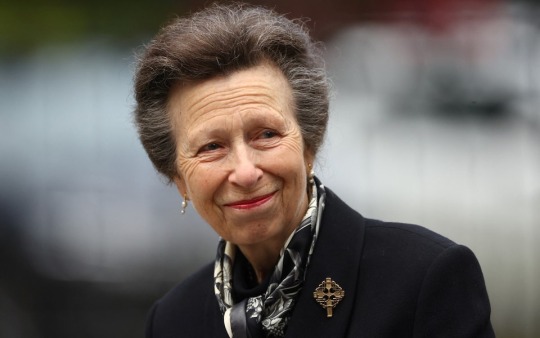
The quiet power of Princess Anne
Grace, restraint and graft: in times of crisis, the Princess Royal comes to the fore.
By Camilla Tominey for The Telegraph
When the Princess Royal stood guard with her brothers, with calm dignity, by her late mother Queen Elizabeth’s coffin at the vigil at St Giles’ Cathedral on Monday, she made history as the first woman to do so. But this solemn moment was also emblematic of her dedication to her mother, and the strength and steadfastness of spirit that have long made her a jewel in the Crown.
It was Anne, her trusted confidante, who her mother had chosen to accompany the coffin on its journey from Balmoral, and to fly with it to RAF Northolt from Edinburgh. On her arrival in London, in just 120 words, the Princess Royal last night encapsulated what has been an extraordinarily moving few days.
“I was fortunate to share the last 24 hours of my dearest Mother’s life,” she wrote in a poignant tribute. “It has been an honour and a privilege to accompany her on her final journeys”. She went on to thank mourners for their love and respect and the British public for the support shown to her brother the new King. She ended her statement simply: “To my mother, The Queen, thank you.”
The Princess Royal had been in Scotland for two days when she had to make the dash to her mother’s bedside at Balmoral Castle to see her for the very last time.
Having visited Tarbert, a village in the west, before spending the previous day on the Isle of Skye, the late Queen’s only daughter had been due to carry out a series of engagements in Perthshire last Thursday morning when news reached her of her mother’s deteriorating condition. She quickly informed her siblings of the situation, prompting Charles to take a helicopter to travel from Dumfries House, where he had been staying, to Royal Deeside. If there is any consolation to Queen Elizabeth’s unexpectedly rapid demise, it is that her son and daughter were already in Scotland and could be with her at the end.
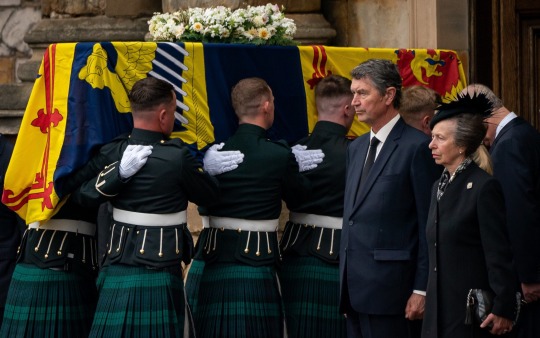
Ever since that heartbreaking day for the royals, the Crown has endured, with the smooth transition to the reign of Charles III supported by a family united in its desire to lead a nation in respectful mourning.
But there has also been one constant: Princess Anne, the ever-dutiful daughter who has played such a dignified role in what the King has described as their late mother’s “last great journey.”
From accompanying the funeral cortège on the poignant six-hour drive through the Scottish Highlands to Edinburgh on Sunday, to yesterday evening’s final flight to London – Anne, 72, has once again proved her willingness to go the extra mile for an institution she has served unwaveringly for more than half a century.
But this wasn’t just a case of a daughter serving Crown and country. Once the arrangements had been made to convey Queen Elizabeth back to Buckingham Palace, ahead of today’s four-day lying in state at Westminster Hall, it was the Princess Royal’s solemn wish that she should be with her every sombre step of the way.
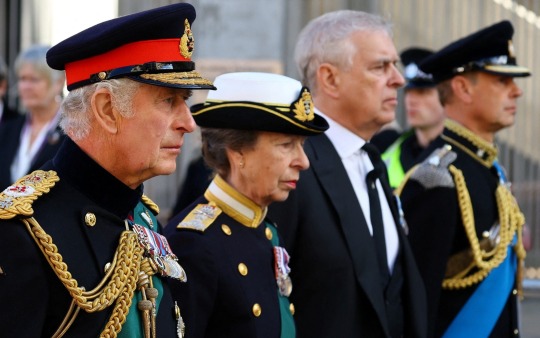
The decision could not be more symptomatic of Anne and the solid presence she has proved to be for a monarchy that has been riven with sibling rivalry in recent years. Amid all the conflict between the King and Prince Andrew – not to mention the ongoing rift between the Prince of Wales and Duke of Sussex – Anne has always risen above: the embodiment of her late mother’s “keep calm and carry on” mantra.
While the grief that was etched on her face as she curtseyed to Queen Elizabeth’s coffin upon its arrival at St Giles’ Cathedral on Monday may have shocked those used to her resolute stoicism, it came as no surprise to those who know the Princess well.
As one friend put it: “I was speaking to someone who used to work for the Princess and we both agreed how distraught she looked. But her dedication to her mother over the years has been tireless. She is just like Queen Elizabeth in being a truly remarkable woman.”
Anne has always quietly got on with the job, sailing through the tricky times by keeping her head down, and focusing on her role as one of the monarchy’s most prolific performers. As well as being one of the hardest-working royals, she has carried out her role without fuss or fanfare, largely eschewing press coverage despite the enormous value of her contribution to The Firm.

Having never felt the need to surround herself with the trappings of royal life, the famously frugal Princess chose not to give titles to her children, Peter Phillips, 44, and Zara Tindall, 41, preferring them to make their own way in life.
In a sign of just how tight-knit they are, the family all live together on Anne’s Gatcombe Park estate. Zara and her rugby player husband Mike share Aston Farm with their three children Mia, eight, Lena, four and one-year-old Lucas, while a stone’s throw away is the cottage where Peter lives with his daughters Savannah, 11, and Isla, 10. So convivial is the scene that Anne remains on very good terms with her ex-husband Mark Phillips, to whom she was married from 1973 to 1992, and let him live on the estate for years following their divorce.
Visitors to Gatcombe Park, an 18th-century country residence in Minchinhampton, Gloucestershire, speak of a thoroughly down-to-earth and outdoorsy set-up where, when she’s off-duty, Anne is known to be “warm”, “funny” and “affectionate” towards her children and grandchildren.
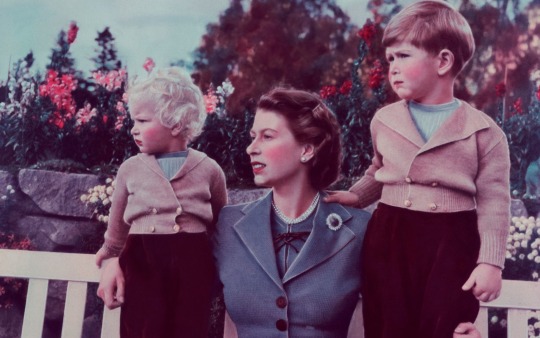
“The Princess is the type of woman who will come up to you and shake your hand rather than expecting you to go to her,” added the friend. “Yes, she is a stickler for protocol but in her private life she is incredibly funny. I remember one time when I asked her which of her grandchildren was the best at riding. I suggested Mia because Zara is such an accomplished horsewoman but the Princess signalled Mia’s lack of interest by doing an impression of the “Am I bovvered?’’ character from Catherine Tate. It was exactly like the TV show, which she had clearly watched. “
On another occasion we were at an event and the Princess suddenly asked, “anyone for a sandwich?” and started making cheese and coleslaw sandwiches and handing them out. I’ve often seen her going around with a tray of canapés. She’s just a normal person,” they continued. “Her house at Gatcombe – it’s quite cluttered. I’m sure it probably needs quite a lot of work doing to it, but she deplores waste. She’ll always look to save costs wherever she can.”
Like her late mother, Anne has also found her “strength and stay” in her husband Vice Admiral Sir Tim Laurence, described by those who know him as “kind” and “decent”. “He’s not an exciting person but he’s an absolute gentleman, terribly nice,” was how one insider describes him.

The couple, who are celebrating their 30th wedding anniversary in December, share a love of sailing and have a yacht, Ballochbuie, moored in a remote harbour on the west coast of Scotland. Their sailing holidays, which usually take place in the early summer, sandwiched between the more than 500 engagements that Anne carries out in a year, are considered to be sacrosanct.
So what will happen to the couple now there has been a significant shift in the royal order?
According to one former royal aide: “I don’t think anything will change for the Princess at all. She doesn’t need to do any stepping up, she’s already done that.
“I don’t think there will be any change in her status or titles and she’s never indicated that she wants to slow down,” they add. “She’s a workaholic and incredibly well respected by her charities and patronages, so she’ll surely just keep calm and carry on.”
There is no suggestion that Zara or Mike will take on any public duties, although both do their bit for charity – and will act as stalwart supports to the Prince and Princess of Wales, to whom they are very close (Zara is Prince George’s only royal godparent while it is thought William is Mia’s godfather).
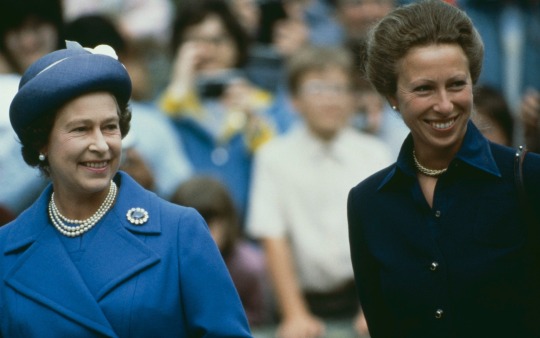
Anne’s proximity in age to the King, 73, means that, of all the siblings, she will likely act as his closest confidante – but they have always led quite separate lives. With their brother Andrew having stepped back from royal duties, Anne will continue to be a “front-row royal” along with the Earl and Countess of Wessex in the court of King Charles.
But first they face the not inconsiderable task of laying their late mother to rest. Having played a central role in Monday night’s “Vigil of the Princes”, when she became the first female to ever take part in the historic ritual, Anne will once again be prominent in today’s walking procession from Buckingham Palace to Westminster Hall – as well as Monday’s concluding ceremony.
Long regarded as a “Daddy’s girl” thanks to her similar no-nonsense temperament to Prince Philip, what we have learned this sorrowful week is that the woman who was never destined to be Queen has proved herself once again to be every inch her mother’s daughter.
#had to share#love this#nice to see her get some recognition#princess anne#princess royal#british royal family#brf#newspapers
326 notes
·
View notes
Photo

Celebrating the coronation of King Charles III and Queen Camilla! God save the King!
Photo: Holyrood Palace, Edinburgh, Scotland
#scotland#edinburgh#royal palace#uk#united kingdom#holyrood palace#british royals#great britain#british isles#palace#celtic europe#britannia#alba#europe#european history#scottish history#british history#castle#king charles iii#royal family#spring#travel#tourism#explore#adventure#european travel#european vacation
6 notes
·
View notes
Text
In Heidi Ann Heiner's Cinderella Tales from Around the World, I've now read the few Donkeyskin tales from Spain and Portugal, followed by the more numerous versions from the British Isles.
*The book features two Spanish variants: The Ass's Skin, which strongly resembles the French versions and has the heroine become a goose girl while disguised in a donkey's skin, and The Golden Chest, which is a "princess hides in a hollow object" variant, in this case a golden chest.
**In The Ass's Skin, the princess's finery is just described as "the loveliest and most costly dresses and jewels," while in The Golden Chest, she asks her father for a gown of multicolored feathers, a gown of fish scales, and a gown studded with stars made of diamonds and pearls.
*The one Portuguese variant, The Princess Who Would Not Marry Her Father, reads like a slightly unwieldy composite of various French, German, and Italian variants. The king chooses his daughter as his bride because only she can wear her late mother's ring. Advised by an old woman who's really a fairy, she demands gowns with the themes of stars, flowers, and many colors, then finally runs away disguised in a wooden dress, which secretly holds the gowns. Calling herself "Maria Wood," she finds work tending another king's ducks; every day, when she's alone with the ducks in a field, she puts on one of her gowns. Three days in a row, the young king sees her from afar, but when asked who the "beautiful lady" was, "Maria Wood" pretends not to know. Meanwhile (whether accidentally or on purpose, it's not clear), she kills a duck each day, until the king decides she's not fit to be a duck herder and brings her into the castle as a maidservant instead. Soon afterward, three balls take place; each time Maria Wood asks to go, the king refuses and throws some object at her, and when she later attends the balls in her gowns, she claims to come from "the land of Boot," "the land of Towel," and "the land of Walking Stick." But then, after the balls, every night she secretly puts on the gowns in her bedroom. One night the king sees her through the keyhole, so he has a new key to the room made, and on a subsequent night he opens the door, catching the princess unawares in her finery. Thus the whole truth is revealed and the king and princess are married.
Next we move on to the English variants.
*Heiner includes Joseph Jacobs' Tattercoats in this section of the book, though I'm not sure why: it's not really a Donkeyskin tale, but more of an unconventional Cinderella. The orphaned heroine lives with her grandfather, a rich lord, who shuns her because his daughter died giving birth to her: he sits day and night by his window, weeping for his daughter until his tears form a channel to the sea, and letting his hair grow so long that it binds him to his chair. She grows up neglected and bullied by the servants, who call her "Tattercoats." Her only friends are her old nurse, who feeds and clothes her, and a boy who tends the geese, who plays music on a pipe that always makes her happy. One day the king gives a ball to find a bride for his son. The grandfather refuses to let Tattercoats go, but the gooseherd comforts her and suggests they at least go into town to see the lords and ladies on the way to the ball. Along with the flock of geese, they set out, dancing all the while as the gooseherd plays music on his pipe. As it happens, the prince comes riding along, and he falls in love with Tattercoats at first sight. (This is a very rare Cinderella tale where the prince falls for the heroine in her rags, though it's implied that the gooseherd's magic pipe causes it.) He brings her to the ball and proclaims her as his bride-to-be, and at that moment, the gooseherd's magical music transforms her rags into a beautiful gown and the geese into attendants for her. Thus she marries the prince, although the ending has two bittersweet notes: the gooseherd disappears and is never seen again, and the grandfather refuses to reconcile with his granddaughter, but still sits and grieves.
**I remembered this tale when I saw the concept art for Disney's Encanto that showed Abuela Alma sitting sadly by her window, with her long hair seeming to form a river. Since both stories have the theme of a troubled grandparent/granddaughter relationship that stems from the grandparent's grief (whether for a lost daughter or a lost husband), I wonder if at that early point in production, the Encanto creative team drew some inspiration from Tattercoats.
*Next, the book features three versions of Catskin. This English tale is a more straightforward variant of Donkeyskin, though without the attempted incest. It exists not only as a prose tale, but as a sung ballad: this book includes two versions of the ballad's rhyming lyrics and one prose version.
**In this tale, a rich lord wants a son, but his wife only gives birth to daughters (or, in the prose version, just one daughter), and when their youngest (or only) daughter is born, he's so disappointed and angry that he wants nothing to do with her. The girl is raised by a nurse in the country, and though her father sends her fine clothes and has her educated, he otherwise ignores her.
**When she grows up, in the two ballad versions, she just sets out to find work because her father doesn't want her and she has nowhere else to go. In the prose version, her father decides to marry her off to the first man who proposes, and he turns out to be a nasty old man, so she runs away. In all versions, though, she bundles up her elegant clothes, dresses herself in a catskin coat, and becomes a scullery maid at a young nobleman's castle.
***When three balls are held, Catskin asks to go each night, but either the bad-tempered cook or the young lord's snobbish mother refuses, and first throws water on her, then hits her with a ladle, then with a skimmer. At each ball, she claims to live at "the Sign of the Basin of Water," "the Sign of the Broken Ladle," and "the Sign of the Broken Skimmer." The fact that the young lord himself isn't the abuser obviously makes the romance more palatable for modern readers, though it means we lose the element of irony and satire from the variants where he is.
**On the third night, the young lord manages to follow the mystery lady into the forest unnoticed, where he sees her change from her gown into her catskin robe. The next say, he asks his mother for Catskin's hand in marriage, but she refuses, so he becomes gravely ill (or, in one ballad version, he feigns illness) and insists on having Catskin nurse him. She comes to his room in her beautiful gown, confirming her identity.
**Meanwhile, back in Catskin's birthplace, her mother and (in the ballads) her sisters have all died, leaving her father alone in the world. He deeply regrets having sent her away, but at last they reunite (either Catskin and her husband come to him or he learns of her marriage and comes to her), and Catskin forgives him.
*The one Irish variant included in this book, The Princess in the Catskins, is like a cross between the English Catskin and the European Donkeyskin tales. The princess's wicked stepfather seeks to marry her after her mother dies, but a fairy disguised as a horse advises her first to demand gowns of silver, gold, and diamonds and pearls, and then to hide them in walnut shells and run away in a catskin disguise. She becomes a scullery maid at another castle, attends three balls, wins the prince's love, and is identified in the end by a ring the prince slipped onto her finger.
**There's no abuse theme in this variant. Instead, the prince notices "Cat-skin's" resemblance to the lady at the ball and tries to question her, but each time she plays dumb. Then at the second and third balls, she pretends to be annoyed with the prince because she's heard that he's been speaking sweetly to a maidservant.
*There are also two Scottish variants, The King Who Wished to Marry His Daughter and Margery White Coats. In both, the princess is expected to marry her father because her late mother's clothes fit no one but her. In The King... her godmother advises her to ask for gowns of swan's down, cottongrass flowers, and gold and silver, for a silver shoe and a gold shoe, and for a chest that can float on the sea. Then she sails across the sea inside the chest, reaches another country, becomes a scullery maid in a wealthy house, and wears her gowns to church on Sundays, where a prince falls in love with her. In Margery White Coats, her uncle advises her to ask for gowns of birds' down, silver, and gold, and for glass shoes, and then helps her escape to another king's palace, where she becomes a scullery maid wearing only her white petticoat and shift, but attends three royal feasts. In both, Cinderella-style, she ultimately loses a shoe, and the prince tries it on every maiden until he finds her.
*Compared to the continental European Donkeyskins, I notice that none of the British versions have the heroine's love interest abuse her in her servant disguise. If the running abuse gag is included at all, the one who inflicts it is always a woman instead, either the love interest's mother or the cook. But several British versions have the heroine be abused and insulted by her fellow servants – whether just by the cook, as in Catskin, or by the whole staff, as in Tattercoats, or as in The Princess in the Catskins, where they can see her regal bearing and bully her for "putting on airs" and where the manservants sexually harass her. This theme is much less common in the versions from continental Europe.
Next on the list of Donkeyskin tales: the versions from Scandinavia.
@ariel-seagull-wings, @adarkrainbow, @themousefromfantasyland
#cinderella#donkeyskin#fairy tale#cinderella tales from around the world#heidi ann heiner#spain#portugal#england#ireland#scotland#tw: incest#tw: violence
11 notes
·
View notes
